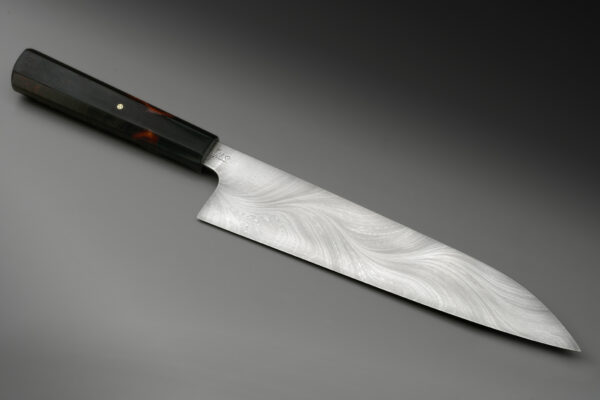Whether you’re a professional chef or a home cook who just loves whipping up delicious meals, the value of a good cooking knife cannot be overstated. But with countless options on the market—each boasting about being the sharpest, most durable, or most ergonomic—how do you know which knife truly stands out?
Here’s a breakdown of what I think makes a top-rated cooking knife.
1. Blade Material: The Foundation of Performance

The type of steel used in the blade is crucial to a knife’s sharpness, durability, and ease of maintenance. Top-rated knives often use:
- High-carbon stainless steel – Offers a great balance of edge retention and rust resistance.
- VG-10 and SG2 (Super Gold) – Premium Japanese steels known for hardness and edge precision.
- Damascus steel – Often layered for aesthetic appeal and performance, offering both beauty and resilience.
Pro Tip: Avoid low-quality stainless steel, which dulls quickly and is hard to sharpen effectively.
2. Edge Retention & Sharpness
A sharp knife isn’t just satisfying—it’s safer. Dull knives require more force and are more likely to slip. Top-rated knives:
- Come razor-sharp out of the box
- Retain their edge after extended use
- Are easy to hone and sharpen
Check the knife’s Rockwell hardness rating (HRC). A rating around 58–62 HRC is ideal for balancing sharpness and durability.
3. Ergonomic Handle Design

A great blade is nothing without a comfortable handle. Whether you’re slicing veggies or breaking down a whole chicken, the knife should feel like a natural extension of your hand. I recommend looking for:
- Non-slip grip (wood, micarta, pakkawood, or thermoplastic rubber)
- Comfortable weight and balance
- Full tang design for added stability and control
4. Balance and Weight

The best knives have a well-distributed balance between the blade and the handle. Too heavy, and it becomes tiring; too light, and you lose control.
Test how the knife feels in your hand:
- Can you chop and slice effortlessly?
- Does it pivot easily for precise cuts?
A well-balanced knife reduces fatigue and improves your cutting efficiency.
5. Versatility and Knife Type

While specialty knives have their place, a top-rated chef’s knife or gyuto (Japanese chef’s knife) is your best all-around tool. It should be able to:
- Dice onions
- Chop herbs
- Slice meat
- Smash garlic
A top-rated knife doesn’t just excel at one task—it does everything well.
6. Build Quality and Craftsmanship
Look closely at the finish. High-end knives show quality craftsmanship:
- Smooth, polished edges (no rough spots)
- Securely attached handle
- Seamless transition between blade and handle
Hand-forged knives from renowned makers (like Shun, Wüsthof, or MAC) often stand out for their attention to detail and longevity.
7. Brand Reputation and Reviews
Finally, word of mouth matters. Look for knives that are:
- Highly rated by chefs and cooking enthusiasts
- Backed by warranties or satisfaction guarantees
- Featured in reputable culinary publications or review sites
Sometimes, the experience of the community is the best indicator of quality.
Final Thoughts: The Right Knife for You
A top-rated knife isn’t just about specs—it’s about what works for you. Consider your hand size, cooking style, and budget. A knife that fits comfortably in your hand and handles your go-to meals effortlessly is worth its weight in gold.
Whether you’re slicing sashimi or prepping for Taco Tuesday, investing in a quality knife will elevate your cooking game—guaranteed.
Want a recommendation list of top-rated knives by budget or use case? Let me know and I’ll break it down for you!
Also know that current commissions with Jonas Blade in 2025 and beyond, start at $1000. If you have a vision of what you are looking for, fill out a contact form at JonasBlade.com.
About The Author
Zack Jonas was born and raised in Massachusetts in the 1980’s and is still a New Englander today. With his growing love for art over the years, he took an introductory bladesmithing class at MASSart. It was there that he learned one of his most valuable lessons, which is that everyone has some insight worth learning. Today, he is a full-time bladesmith and feels incredibly fortunate to have found his calling.

